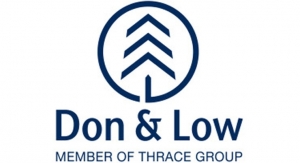07.12.21
Price Hanna Consultants LLC, a global management consulting firm whose principals have specialized in the nonwoven products, hygiene absorbent products and related fields, worldwide, for more than 35 years, has published a new report which provides comprehensive global and regional market information on spunbonded, spunmelt and stand-alone meltblown nonwoven polypropylene capacity, demand, manufacturing costs and profitability through 2025. The report provides detailed information on capacity by producer, country and location, line, technology, and beam configuration and compares regional and global supply to demand. The report is of value to companies at all levels of the spunbonded and spunmelt nonwoven polypropylene value chain to enhance their understanding of capacities, comparative producer costs and profitability and regional and global supply/demand. The report is available for immediate delivery in hard copy or electronic PDF.
From 2015 to 2020, global nameplate fine and coarse denier capacity increased 23.4% over 2015. Average annual capacity growth during the period was 4.3%. Merchant market capacity grew at an even faster rate of 5.2%. The large increment of capacity installed during 2015 – 2020 weighed on regional capacity utilization and challenged the continued operation of early generation technology for much of the period. Based upon capacity expansions already completed or announced, global fine and coarse denier capacity will increase about half that commissioned during the prior five year period but will grow larger before 2025. Spunmelt composite lines are now the most commonly installed technology type and capable of supplying both modern hygiene and medical barrier demand. Our report provides a detailed estimate and analysis of hygiene related supply, demand, and machine utilization each year from 2020 - 2025 in each global region. Demand is growing at attractive rates in developing markets. Capacity utilization will be uneven among global regions and producers and dependent upon exports in some regions. Hygiene demand continues to dominate consumption. Positioning of new plants and capacity in India and Africa illustrate growth in these developing markets. Several major factors influence producer profitability around the world, including raw material costs, supply/demand imbalances, increasing use of modern, low-cost technology, shifts in merchant market versus captive demand, producer consolidation and restructuring. Modern, advanced technology has been, and will continue to be, installed. Some 20 Reicofil 5 lines have or will be installed and more are rumored for installation through 2025. Newer technology will take share from older, less productive units of capacity to supply the hygiene market. Older technology will be used to supply non-hygiene markets and generally operate at lower utilization rates until retired.
This Price Hanna Consultants study provides significant new findings on the following topics:
· Perspective on regional and global capacity development from 2015 - 2025 and estimates of supply/demand by global region for each year from 2020 - 2025.
· Estimates of imports and exports by region and their impact on regional capacity utilization.
· Analysis of regional output capacity capable of supplying modern hygiene end uses by individual machine and in total by producer and region as compared to regional demand.
· Cost-of-manufacture estimates for selected leading regional producers using the latest generation technology based on estimates of Q1 2021 polypropylene costs.
From 2015 to 2020, global nameplate fine and coarse denier capacity increased 23.4% over 2015. Average annual capacity growth during the period was 4.3%. Merchant market capacity grew at an even faster rate of 5.2%. The large increment of capacity installed during 2015 – 2020 weighed on regional capacity utilization and challenged the continued operation of early generation technology for much of the period. Based upon capacity expansions already completed or announced, global fine and coarse denier capacity will increase about half that commissioned during the prior five year period but will grow larger before 2025. Spunmelt composite lines are now the most commonly installed technology type and capable of supplying both modern hygiene and medical barrier demand. Our report provides a detailed estimate and analysis of hygiene related supply, demand, and machine utilization each year from 2020 - 2025 in each global region. Demand is growing at attractive rates in developing markets. Capacity utilization will be uneven among global regions and producers and dependent upon exports in some regions. Hygiene demand continues to dominate consumption. Positioning of new plants and capacity in India and Africa illustrate growth in these developing markets. Several major factors influence producer profitability around the world, including raw material costs, supply/demand imbalances, increasing use of modern, low-cost technology, shifts in merchant market versus captive demand, producer consolidation and restructuring. Modern, advanced technology has been, and will continue to be, installed. Some 20 Reicofil 5 lines have or will be installed and more are rumored for installation through 2025. Newer technology will take share from older, less productive units of capacity to supply the hygiene market. Older technology will be used to supply non-hygiene markets and generally operate at lower utilization rates until retired.
This Price Hanna Consultants study provides significant new findings on the following topics:
· Perspective on regional and global capacity development from 2015 - 2025 and estimates of supply/demand by global region for each year from 2020 - 2025.
· Estimates of imports and exports by region and their impact on regional capacity utilization.
· Analysis of regional output capacity capable of supplying modern hygiene end uses by individual machine and in total by producer and region as compared to regional demand.
· Cost-of-manufacture estimates for selected leading regional producers using the latest generation technology based on estimates of Q1 2021 polypropylene costs.







